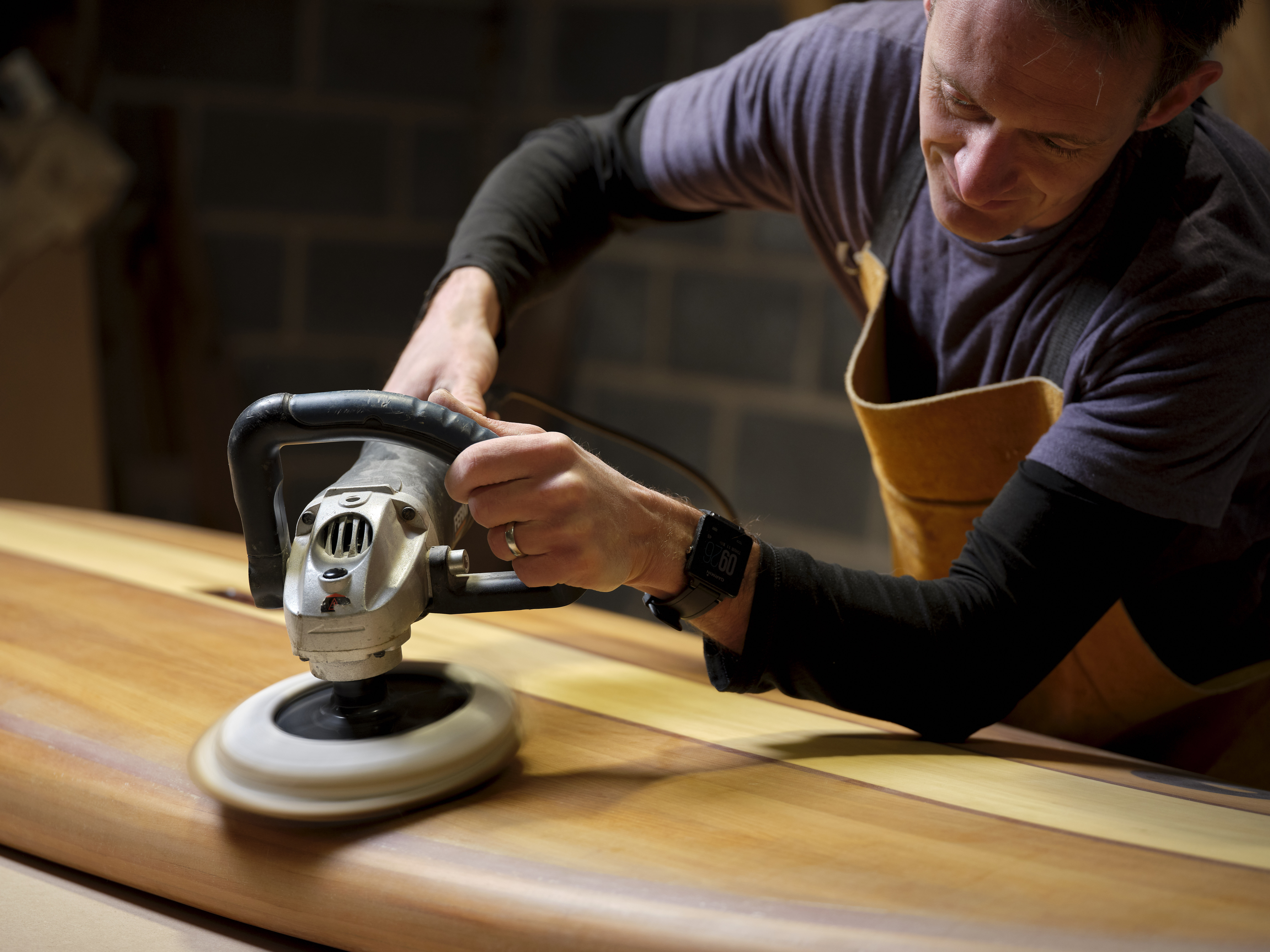The 5 Types of Sanders, and How to Choose the Right One for the Job.

Sanders are one of the most helpful power tools out there. There are plenty of jobs where sanding by hand just isn’t a viable option – it’s too tiring and too difficult to apply evenly. That’s why an electric sander is such a good investment, even for a casual DIYer.
But there are a few different types of sanders out there, and each has its own pros and cons. Below, we’ll talk about the 5 most popular types of sanders to help you decide which one is the right choice for your next project or power tool purchase
1. Random Orbital Sanders
Random Orbital Sanders are the most popular sander on the market today, and for good reason. These sanders are versatile and easy to use – it’s actually quite hard to leave a scratch with a random orbital sander! However, they still pack a decent enough amount of power.
These sanders work by spinning off-centre and vibrating as they orbit, creating a random motion. This random motion results in a smoother, more even finish as there’s no repetitive pattern hitting the grain again and again. Random orbital sanders typically use a specialised 5” or 6” pad that has to be replaced after a while.
You’re simply more likely to get a scratch-free finish with a random orbital sander. This is compared to a regular orbital sander, where the repetitive, uniform orbiting motion commonly leaves grooves or scratches if you’re not careful or you go against the grain.
Truthfully, you can use a random orbital sander effectively on most jobs. It’s a good in-between for those medium-sized areas when a small finishing sander won’t cut it but a belt sander would be too intense. While they’re great at smoothing wood out, they’re not the best for ripping away huge amounts of wood quickly
2. Belt Sander
A belt sander is the workhorse of electric sanders. This should be your go-to sander on big surface-area jobs, or jobs where you need to take off a lot of timber. However, belt sanders are very powerful and it’s easy to damage your wood if you’re not used to handling them
Essentially, a belt sander has a motor that powers two drums. These drums spin and turn a sandpaper belt at high velocity, sanding the timber in a single linear direction. These are big, two-handed power tools that exert a lot of power, so you’ll need to be careful as you handle them.
A belt sander will save you a lot of time when it comes to removing wood and levelling rough surfaces. But it’s also the quickest way to damage your project if you slip up. Always try to work slowly and steadily with a belt sander, aim to go with the grain and never push down too hard on your timber.
Finally, you should always use a clamp on smaller objects so that the belt sander doesn’t send them flying across the room. Finely detailed sanding jobs are not really suited to this tool, but heavy ones definitely are. If you treat this powerful tool with respect, you’ll get a lot out of it.
3. Orbital Finishing Sander
These are the predecessors to the Random Orbital Sander, and while they’re not as versatile as their random cousins, they’re still a useful sander in their own right.
Sometimes called a ‘finishing sander’, these are great for prepping for paint, knocking off a thin layer or if you only need to do some light sanding. They’re also much cheaper than random orbital sanders, at roughly half the price.
Orbital sanders are often small (think the palm of your hand) and easy to manoeuvre, making them great for smaller jobs. They have a standardised rectangular sanding pad that’s awesome for getting right into corners.
There’s minimal cross-grain scuffing compared to a belt sander, although you can definitely still leave obvious scratches if you’re not careful or you go right against the grain. The other downside is that these just aren’t really powerful enough for huge surfaces or heavy sanding.
On the upside, it’s a bit cheaper to restock sandpaper than if you were using a random orbital sander, as you can simply cut regular sandpaper to fit and clamp it in, instead of having to buy a replacement random orbital sanding pad.
4. Disk Sander
A disk sander is a more specialised woodworking tool that’s perfect for sanding fine, tricky details and curved edges. It’s a table-mounted power tool, which means that you can use both your hands to manoeuvre and shape the wood with ease.
Essentially, the disk sander is what it sounds like – a spinning disk of sandpaper that’s mounted vertically on a tabletop. They’re generally pretty large. This mounted set-up is ideal for small projects that require precision shaping – like curves – or even if you want to remove a lot of wood very quickly by pressing your wood hard against the spinning disk
The obvious downside is that the tabletop design is fairly impractical for large sanding projects, and downright impossible for heavy objects or things like floors. Certain DIYers or woodworkers will get a lot of value and precision out of this unique tool, but a general user may find the design pretty limiting.
5. Multi Sander
It’s in the name, multi sanders are sanders that combine multiple sanding functions into one tool. Because they’re designed with convenience in mind, these sanders are often small enough to fit into the palm of your hand.
A multi sander can have as many as 5 or 6 different sanding options, though there’s no fixed amount between different brands and models. At the very least, a multi sander will have a minimum of 2 modes – even if that’s just switching between orbital sanding and random orbital sanding.
The one thing to keep in mind with these is that it’s a bit of a ‘jack of all trades, master of none’ situation. For instance, a multi-sander may have a belt sander setting, but it won’t be as good as a real belt sander. This usually goes for most settings – but that’s not to say they’re bad. Some of the higher quality multi-sanders out there offer incredible value
Overall, any kind of multi-sander is an excellent choice if you only sand occasionally and you’re not sure what kind of projects you have coming up in the future.
These are the five main types of sanders available. Having an understanding of these 5 sanders will help you make the right choice when you’re choosing a sander for your next DIY job.
Explore our curated range of high-quality sanders at Multifors. We’re an online hardware marketplace with a huge range of power tools and power tool accessories. Fast delivery across Metro Melbourne from $19.95.
-
 11, Jul, 2022
11, Jul, 2022Feature Product: The Stain Proof Range
We regularly review some of our favourite products. Today, we’re... -
 5, Jul, 2022
5, Jul, 2022Concrete Sealer: What You Need to Know
Concrete is a sturdy material that’s practical and affordable. In... -
 24, Jun, 2022
24, Jun, 2022A Product Guide for DIY Pool Areas
Tiling a pool area is a great DIY project. In...


